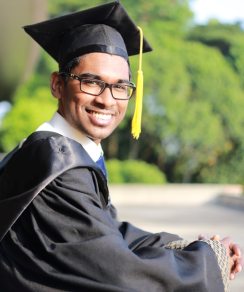I recently attended an OCCRL-hosted webinar titled “Dismantling the Barriers to Equitable Outcomes: Case Studies to Support the Centering of Equity in Institutional Transformation.” It was led by Keith Withman from the Aspen Institute and Susan Mayer and Carol Lincoln from Achieving the Dream (ATD).
The webinar centered on three case studies of community colleges across the country that have achieved increased positive student outcomes or have narrowed the equity gap through direct, holistic approaches. The presentation began with an explanation of the goals of the Dismantling the Barriers project: to strengthen Aspen and ATD leadership and training development and create instructional resources to encourage the adoption of equity-centered approaches in various institutions.
 After compiling data of community colleges included in Aspen’s Rising Star and Aspen Prize Competition databases, as well as ATD leader colleges and leader colleges of distinction, the researchers narrowed the choice down to three distinct cases: Fond du Lac College, Grayson College, and Pierce College.
After compiling data of community colleges included in Aspen’s Rising Star and Aspen Prize Competition databases, as well as ATD leader colleges and leader colleges of distinction, the researchers narrowed the choice down to three distinct cases: Fond du Lac College, Grayson College, and Pierce College.
Lincoln explained that they chose these specific institutions because “they do present a variety of stories, different journeys, different ways of looking at equity and even defining equity, so we can have a rich collection of ways of thinking about this work and learning about it.”
The first institution Lincoln introduced, Fond du Lac College, is a tribal college in Minnesota. The student population is 23% Native American, and the school puts an emphasis on nation-building and cultural preservation. Fond du Lac has the largest number of Native American students compared to any other institution in Minnesota, though they only make up about a quarter of the student population. The institution also serves a significant number of African American students.
Despite being the smallest of the colleges chosen, with only around 2,300 students, Lincoln explained that Fond du Lac has made great strides bridging the equity gap for Native and African American students. The college, which has limited resources, began its efforts by focusing on low-cost faculty engagement and building data capacity to review information on student attendance and course completion.
Lincoln then introduced Grayson College as a small- to medium-sized institution with about 4,600 students in rural Texas. The college is located in one of the poorest counties in the state, where approximately 50% of students receive financial aid. Student outcomes, however, have increased thanks to the creation of student success strategies that led to the redesign of developmental education, pathways for students, and term length.
Pierce College, the third case study, is notably larger than the other two institutions with about 15,000 students. The school is home to a large number of dual-enrollment students and veterans.
Lincoln explained that the team “thought their story was pretty compelling because of the long-term emphasis they’ve had on equity and the pursuit of equity.”
Pierce College has accomplished a great deal in respect to equity by democratizing data to allow faculty to support course-level improvement and initiating a budget that returns a percentage of funds toward innovations tied to equity.
Although all three institutions have enacted considerably different approaches toward advancing equity with varying levels of success, Richard Kazis commended them on the progress they have been able to make on overall student outcomes in a relatively short period. Reducing the systemic gaps, however, “is coming much slower, more uneven and in pockets rather than broad institutional change,” Kazis said.
The presentation then analyzed the commonalities and differences of the colleges’ approaches. The common theme of Fond du Lac College and Pierce College is that they are still in the process of increasing equity, meaning that improvements are being made, and there is more work to be done to close gaps for large numbers of students. Grayson College, on the other hand, has been able to reduce the achievement gap for all students.
Unlike the other institutions, Grayson College experienced legislative policy that affected its priorities. In Texas, the requirement that colleges move to co-requisite education had “some very significant results in creating asset mindsets and reducing equity gaps,” Mayer explained.
Positive conditions to drive progress were evident in all three colleges. The institutions combined top-down leadership and bottom-up innovation to foster strong leaders and give faculty and staff an understanding of racial inequality. Mayer explained that the leaders of these schools understood what pushes change forward and were able to communicate that effectively.
The institutions combined top-down leadership and bottom-up innovation to foster strong leaders and give faculty and staff an understanding of racial inequity.
The colleges also developed equity statements that represent the importance of equity at their institutions. Fond du Lac College adopted “Equity is our reason for being” as its statement, while Pierce College went with “A relentless pursuit of equity.” Personally, I thought Grayson College’s slogan—“We meet our students where they are”—was the most impactful.
According to Mayer, the schools’ statements combined with their focus to improve student outcomes have enhanced their ability to share and communicate disaggregated data widely throughout the institutions.
Mayer then described the institutional capacity all three colleges were able to build during the past few years, which allowed them to align their priorities and resources and hold their teams accountable for progress and continuous equity consciousness.
Although closing the equity gap will require broader institutional change, the strategic equity-centered approaches of these cases offer insights on how to achieve equitable outcomes for all students in varied institutions.
Watch the webinar
